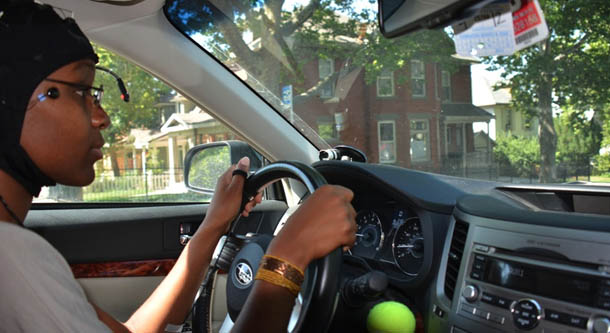More Evidence That Voice-Activated Car Tech Is Unsafe

Voice-activated devices in cars seemingly allow drivers to talk, text, send emails and even use Facebook while staying focused on the road. But growing evidence suggests these technologies can overload motorists' attention, and foster mental distractions that are still risky.
A new report issued by AAA Foundation for Traffic Safety found that as drivers increase their mental workload, their reaction times slow, and visual cues go ignored. This means that even if drivers seem to have their eyes on the road, they may not be fully aware of objects ahead of them, like stop signs and pedestrians, the researchers said.
"An unintended consequence of trying to make driving safer — by moving to speech-to-text, in-vehicle systems — may actually overload the driver and make them less safe," University of Utah psychology professor David Strayer said in a statement.
"Just because you can update Facebook while driving doesn't mean that it is safe to do so," Strayer added. "Don't assume that if your eyes are on the road, and your hands are on the wheel, that you are unimpaired."
Strayer and colleagues recorded drivers' eye and head movements, as well as their reaction times to triggers such as red lights, while they were exposed to different kinds of distractions, such as radio and voice-activated email. They also measured the drivers' brain activity with an electroencephalographic (EEG)-configured skull cap, to examine mental workload.
The researchers found that tasks such as listening to the radio posed a minimal cognitive distraction, while talking on a cellphone, regardless of whether it was handheld and hands-free, was moderately risky. Listening to and responding to in-vehicle, voice-activated email increased mental workload the most, and caused the most extensive risk.
The findings aren't entirely new. A 2006 study by Strayer found that hands-free cellphone use was just as distracting as handheld cellphone use in the car. Just this month, Georgia Tech researcher Robert Rosenberger published a pair of articles warning that voice-actived tools give motorists a false sense of security. While glancing away from the road to look at a cellphone is risky, trying to participate in a conversation by talking or voice-texting can also dangerously remove a driver's awareness from the road, Rosenberger argued.
Get the world’s most fascinating discoveries delivered straight to your inbox.
Nonetheless, new car models increasingly feature voice-activated devices, and so-called "infotainment" systems are expected to increase five-fold in new vehicles by 2018, AAA officials said.
"There is a looming public safety crisis ahead with the future proliferation of these in-vehicle technologies," AAA president and CEO Robert L. Darbelnet said in a statement. "It's time to consider limiting new and potentially dangerous mental distractions built into cars, particularly with the common public misperception that hands-free means risk-free."
AAA recommended that the auto industry should consider limiting voice-activated technologies to driving activities, such as climate control, windshield wipers and cruise control. These systems could also block social media, e-mail and text messages while the car is in motion, AAA says.
The report was published today (June 12) on the AAA website.
Follow Megan Gannon on Twitter and Google+. Follow us @livescience, Facebook & Google+. Original article on LiveScience.com.



